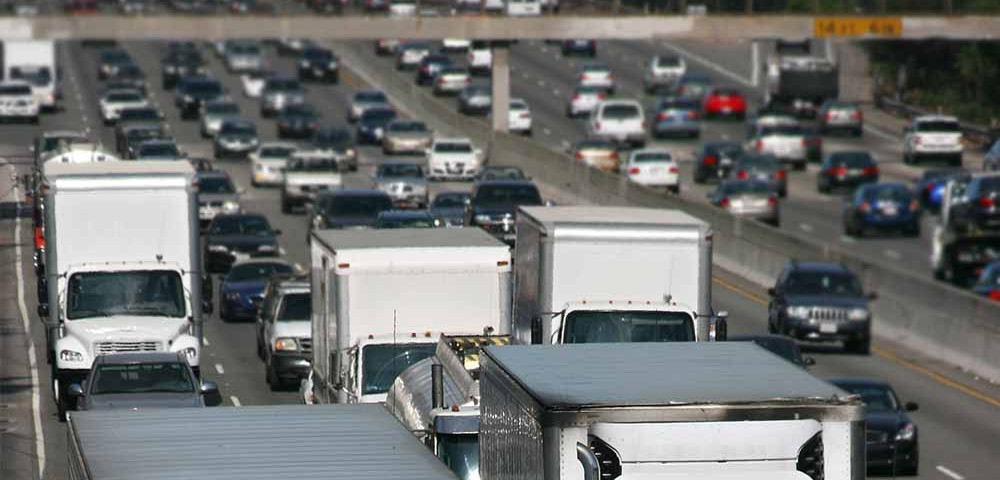History
A track record of excellence in client service and innovation.
A track record of excellence in client service and innovation.
Cambridge Systematics (CS) is an independent, employee-owned firm, recognized throughout the nation as a leader in transportation.
CS was founded in 1972 by four Massachusetts Institute of Technology professors and a colleague who shared an understanding that transportation's greatest challenges call for thoughtful, research-based solutions. To this day, our staff are dedicated to forging strong partnerships and delivering innovative solutions for our clients and their communities.
Scroll through the timeline below for a glimpse of the key projects, milestones, and events that have happened over the course of five decades at Cambridge Systematics.
The 1980s spur major changes in the way business is done. Personal computers, cell phones, the Internet, “Reagonomics,” and further deregulation transform the U.S. economy. Optimistic about the new information age, CS adds new services, staff, a corporate office, and elect a new President.


CS supports the EPA in transportation and air quality. CS provides technical assistance to the EPA itself, states, metropolitan planning organizations and city agencies on planning, design, analysis, and evaluation of all transportation measures necessary for a nonattainment area to meet the National Ambient Air Quality Standards (NAAQS) by 1987.
CS supports the EPA in transportation and air quality. CS provides technical assistance to the EPA itself, states, metropolitan planning organizations and city agencies on planning, design, analysis, and evaluation of all transportation measures necessary for a nonattainment area to meet the National Ambient Air Quality Standards (NAAQS) by 1987.

Championed by the Reagan Administration, the Surface Transportation Assistance Act of 1982 addresses concerns about surface transportation infrastructure. The accompanying Highway Revenue Act of 1982 adds 5¢ to the gas tax, 4¢ towards interstate highway and bridge repair, and 1¢ for public transit.


Lance Neumann becomes the second President of CS when William Jessiman accepts a position with American Airlines.
Part of Reagan’s promise to deregulate the transportation sector, this act eliminates economic regulation of general commodities for freight forwarders.


CS provides travel demand forecasting, economic impact assessments, and transportation planning support for this major highway project, the largest highway construction project in the nation at the time. We play a leading role in assessing the environmental impact, developing the preliminary and
CS provides travel demand forecasting, economic impact assessments, and transportation planning support for this major highway project, the largest highway construction project in the nation at the time. We play a leading role in assessing the environmental impact, developing the preliminary and final design, litigation, and land use and economic forecasting that lays the groundwork for construction of this multibillion-dollar federally funded highway project.



CS conducts a study of the Central Wisconsin corridor connecting the Green Bay and Appleton areas with Minneapolis to determine the economic impact of a proposed freeway connecting the 18-county region. This comprehensive study evaluates the potential economic benefits to the area, including
CS conducts a study of the Central Wisconsin corridor connecting the Green Bay and Appleton areas with Minneapolis to determine the economic impact of a proposed freeway connecting the 18-county region. This comprehensive study evaluates the potential economic benefits to the area, including identification of industries that might be attracted to the region and the State of Wisconsin as a result of the highway project.

STURRA gave power to apportion money to the Secretary of Transportation and allowed states to raise the speed limit of rural interstate highways to 65 mph.


CS evaluates proposals to ban heavy trucks from urban freeways in Los Angeles, San Francisco, and San Diego during peak commuter periods to relieve congestion and air pollution. The study documents the impacts of heavy trucks on urban freeway traffic, examines several proposed strategies, and estimates the cost to industry and government for each strategy.
CS evaluates proposals to ban heavy trucks from urban freeways in Los Angeles, San Francisco, and San Diego during peak commuter periods to relieve congestion and air pollution. The study documents the impacts of heavy trucks on urban freeway traffic, examines several proposed strategies, and estimates the cost to industry and government for each strategy.



Pontis® is a software application, built in partnership with the FHWA to assist in highway structure management by storing inspection and inventory data based on the FHWA’s guidelines. In 1994, FHWA transfers ownership of Pontis® to AASHTO and it becomes part of the AASHTOWARE program.
Pontis® is a software application, built in partnership with the FHWA to assist in highway structure management by storing inspection and inventory data based on the FHWA’s guidelines. In 1994, FHWA transfers ownership of Pontis® to AASHTO and it becomes part of the AASHTOWARE program.
